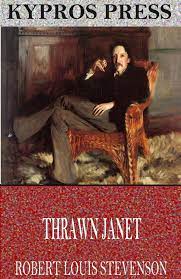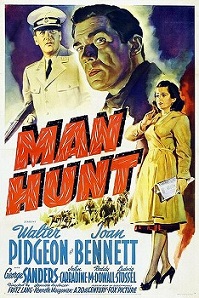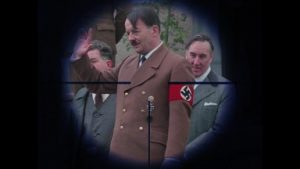
© Vintage Publishing
Here’s the latest in a series of posts wherein I look at the original James Bond novels and short-story collections from the 1950s and 1960s. This time, however, I’m looking at a Bond novel that wasn’t written by Ian Fleming. It’s 1968’s Colonel Sun, by Kingsley Amis. Why? Well, I slagged off Amis’s The Old Devils (1986) on this blog a few months ago, and I feel a bit guilty about giving poor old Kingsley a (verbal) kicking then. So here’s my take on Colonel Sun, which I believe is much better.
In some ways, the 21st century has been a difficult time for James Bond. On the film front, the new century began with one of the worst Bond movies ever, 2002’s Die Another Day, an ignoble end to Pierce Brosnan’s tenure in the role. And, though the franchise was steadied with the recruitment of Daniel Craig and a more serious, mature and sensitive approach to the character, trouble never felt far away. See, for example, the long periods between productions – six years from Spectre (2015) to No Time to Die (2021) – and Craig’s well-publicised reluctance to play Bond again after Spectre. And the fact that, in the most recent movie, the filmmakers took the unprecedented step of – MASSIVE SPOILER AHEAD! – killing him off at the end.
Plus, there’s been much talk in recent years about Bond’s ‘obsolescence’. The thinking goes that as a privileged, white, stuck-up, sexist macho-man rooted in the early decades of the Cold War, Bond has become embarrassingly anachronistic in our more socially-aware era today. Laurie Penny, for instance, said as much in a New Statesman article in 2015. There’s a parallel argument that in the high-tech modern world Bond is obsolescent too. This was even referred to in Spectre, when Bond is faced with a new, tech-obsessed superior called C (Andrew Scott). C vows to “bring British intelligence out of the dark ages, into the light” and argues that “an agent in the field”, like 007, can’t “last long against all those drones and satellites.”
And yet, no matter how unfashionable Bond might be nowadays, you can’t deny that well-regarded modern writers are still keen to follow in Ian Fleming’s footsteps and have a go at writing new Bond novels. These include Sebastian Foulkes (with 2008’s Devil May Care), Jeffery Deaver (with 2011’s Carte Blanche), William Boyd (with 2013’s Solo) and Anthony Horowitz (with 2015’s Trigger Mortis and 2018’s Forever and a Day). Long before Foulkes, Deaver, Boyd and Horowitz got in on the act, though, another writer attempted to construct a novel around Fleming’s legendary superspy.
In 1968, just four years after Fleming’s death, Kingsley Amis wrote a Bond adventure called Colonel Sun and published it under the pseudonym Robert Markham. By then, Amis was a big noise in British letters thanks to works like 1954’s Lucky Jim and 1960’s Take a Girl Like You. I should say my 2015 Vintage Classics edition of Colonel Sun makes no mention of Robert Markham on its cover and advertises it unapologetically as a Kingsley Amis novel. Anyway, before I offer my thoughts on Colonel Sun, here’s another spoilers warning. There are lots of them ahead…

© Ian Fleming Publications
The novel is set a little while after the events of Fleming’s Bond swansong, The Man with the Golden Gun (1965), which Amis is rumoured to have polished up when Fleming died before he could revise it himself. It begins with an audacious attempt by some unidentified villains to kidnap both Bond and his secret-service boss M. They’re only half-successful. M is abducted and whisked out of England, but Bond manages to elude his would-be abductors and is tasked with tracking M down. He soon homes in on an island in the Aegean Sea. There, M is being held by a Chinese officer, ‘Colonel Sun Liang-tan of the Special Activities Committee, People’s Liberation Army’.
The Colonel has a dastardly plan. The Soviet Union is hosting a secret international conference in the area and Sun plans to destroy it and the delegates in a mortar attack, the blame for which will then be pinned on Britain. Sun intends to make it look like one of the last mortars blew up accidentally, before firing, and leave Bond and M’s dead, but still identifiable, bodies in the wreckage. Thus, China will benefit from the discrediting not only of the USSR for sloppy security, but also of the UK for warmongering.
To rescue M and thwart Sun’s scheme, Bond joins forces with a woman called Ariadne Alexandrou, a Greek communist who’s been working for the Soviets; and a Greek World War II veteran called Niko Litsas who, after fighting Nazis, fought communists during the 1946-49 Greek Civil War. Amis discreetly skates over Britain’s sorry role in this episode of Greek history. In 1944 the British government decided to back the anti-communist faction in Greece against the left-leaning one, even though the former faction contained many Nazi sympathisers and collaborators and the latter contained many partisans who’d fought for the Allies. Despite their ideological differences, the trio bond – ouch – and are soon prowling the Aegean Sea in a vessel called The Altair whilst figuring a way of taking the fight to Sun and his many henchmen.
Amis’s plot is generic and a few things don’t make sense. For example, why does Sun want to plant the elderly and normally deskbound M at the scene of the crime? This is the literary M we’re talking about, not the feistier and more empowered cinematic version played by the likes of Judi Dench and Ralph Fiennes. Wouldn’t it look more believable if the body of another, physically-able British agent was found there next to Bond’s? It’s hard to see this as anything more than a perfunctory excuse for the novel’s main gimmick, the kidnapping of M.
But Colonel Sun is still good entertainment and feels more credible as a Bond novel than the other non-Fleming Bonds I’ve read. For one thing, unlike the rather bland villains in most of the 21st century Bond-novels I mentioned above, Colonel Sun makes a memorable baddie.

© Methuen
Yes, he belongs to a long tradition of Oriental supervillains found in pulpy colonial adventure fiction – Sax Rohmer’s Fu Manchu books being the most notorious examples. He’s not even the first bad guy in the Bond canon to follow this dubious blueprint, an honour that belongs to the titular character of Fleming’s Dr No (1957). But Sun is splendidly eccentric. He’s irritatingly polite and addresses friends and foes alike by their first names. He also sees himself as an Anglophile: “Sun did not share his colleagues’ often-expressed contempt… for everything British. He was fond of many aspects of their culture and considered it regrettable in some ways that that culture had such a short time left.”
Then there’s his penchant for torture. Near the novel’s end, just before he lays into Bond with an array of kitchen utensils (‘knives, skewers, broom-straws’), he explains: “True sadism has nothing whatever to do with sex. The intimacy I was referring to is moral and spiritual, the union of two souls in a rather mystical way.” Later still, he surprises us when he confesses to Bond that “I didn’t feel like a god when I was torturing you back there. I felt sick and guilty and ashamed.”
Admittedly, I could have done without the linguistic quirk that Amis gives him. Thanks to his “quick ear and passionate desire to learn” English and a “total ignorance of the British dialect pattern”, he’s ended up with a bizarre accent combining the “tones of Manchester, Glasgow, Liverpool, Belfast, Newcastle, Cardiff and several sorts of London…” As a result, every time Colonel Sun opens his mouth in the book, I imagine his voice sounding like an Artificial Intelligence one created from a dataset involving Liam Gallagher, Billy Connolly, Ringo Starr, Van Morrison, Jimmy Nail, Charlotte Church and Ray Winstone.
Colonel Sun also feels like a proper Bond novel because Kingsley Amis’s authorial voice doesn’t sound that different from Ian Fleming’s. Putting it more crudely, it feels closer to the originals than the modern pastiches do because Amis was as much of a curmudgeonly snob as Fleming was. By the 1960s, Bond’s rarefied world of Bentleys, dinner jackets and private members’ clubs were on their way out; and Amis bellyaches about it as you’d imagine Fleming would. When Bond drives through some English farmland, he writes: “Places like this would last longest as memorials of what England had once been. As if to contradict this idea, there appeared ahead of him a B.E.A. Trident newly taken off from London Airport, full of tourists bringing their fish-and-chip culture to the Spanish resorts, to Portugal’s lovely Algarve province, and now… as far as Morocco.”
Also activating Amis’s Licence to Grump is the prospect of the great, fish-and-chip-loving unwashed discovering the Greek islands. Describing a waterfront, he observes: “At the near end were whitewashed cottages with blue or tan shutters and doors, then a grocery, a ship’s supplier, harbour offices, a tavérna with a faded green awning. No neon, no cars, no souvenir shops. Not yet.”
Still, some aspects of Colonel Sun are surprisingly liberal, considering Amis’s cranky right-wing politics. Adriane, the book’s heroine, is resourceful and able to look after herself and Bond comes across as less of a sexist boor than one might expect. Meanwhile, some Soviet characters are depicted sympathetically: for example, Gordienko, Moscow’s man in Athens, who believes Bond’s warnings that something fishy is afoot and will have bad consequences for both their countries; and Yermolov, the pragmatic, vodka-loving dignitary who at the end expresses the USSR’s gratitude to Bond for foiling Sun’s plan. Indeed, Yermolov feels like a prototype for the tough but avuncular General Gogol, the KGB head played by Walter Gottel, who appeared in every Bond movie from The Spy Who Loved Me (1977) to The Living Daylights (1987). In Colonel Sun, Yermolov even offers Bond the Order of the Red Banner; just as Gogol awards Roger Moore (‘Comrade Bond’) the Order of Lenin at the end of 1985’s A View to a Kill.

© Eon Productions
But before we assume that old Kingsley has gone all hippy-dippy and peace-and-love, we should bear in mind that the Soviets are the good guys here only comparatively – because the bad guys are the Chinese. The novel even postulates that the West and the Soviet Union are on the brink of working together because of the increasing threat posed by China. Richard Nixon’s jaunt to China in 1972 must have knocked that notion on the head. Happily, by the time of the 1997 Bond movie Tomorrow Never Dies, which has Pierce Brosnan joining forces with Michelle Yeoh to take on Rupert Murdoch, sorry, an evil, fictional media mogul played by Jonathan Pryce, the Bond-verse had decided that the Chinese could be good guys too.
While Colonel Sun has never been filmed, it’s interesting how a few of its ideas have turned up in the Bond movies. The kidnapping of M was a key plot element in 1999’s Tomorrow Never Dies, while a villain called Colonel Tan-Sun Moon features in Die Another Day. And if Colonel Sun’s musings during the book’s climactic torture scene sound familiar – “Torture is easy, on a superficial level. A man can watch himself being disembowelled and derive great horror from the experience, but it’s still going on at a distance… a man lives inside his head. That’s where the seed of his soul is… So James, I’m going to penetrate to where you are. To the inside of your head….” – it’s because they were used as dialogue in Spectre, during the scene where Christoph Waltz violates Daniel Craig’s skull using a torture device that looks like a dentist’s drill on a robotic tentacle.
In Spectre, Waltz’s character is revealed as being none other than Ernst Stavro Blofeld. Having James Bond’s great arch-enemy borrow his best lines? Colonel Sun would have been flattered.

© Eon Productions









